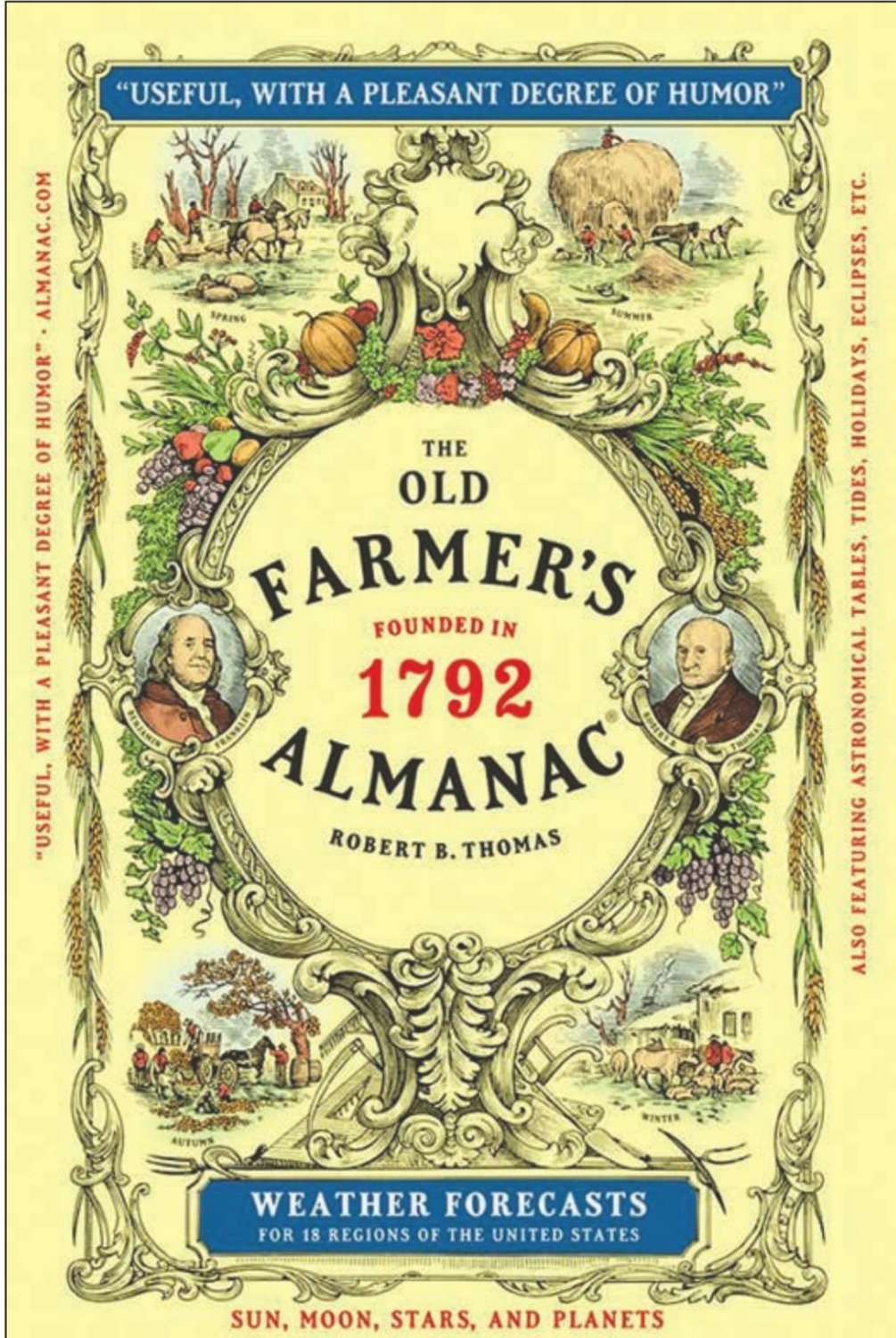Grandma gardened with her Farmer’s Almanac
G ardening weather is here.
In the old days, Grandma used The Farmer’s Almanac.
The publisher boast about it being 80% accurate since 1792.
Since the beginning of civilization, we …
This item is available in full to subscribers.
Subscribe to continue reading. Already a subscriber? Sign in
Get 50% of all subscriptions for a limited time. Subscribe today.
Please log in to continueNeed an account?
|
Grandma gardened with her Farmer’s Almanac
Gardening weather is here.
In the old days, Grandma used The Farmer’s Almanac.
The publisher boast about it being 80% accurate since 1792.
Since the beginning of civilization, we have come up with weird ways to predict weather.
They predicted winter weather by checking woolly caterpillars and the bulges and thickness of pig spleens.
Tight, thick corn husks and tough apple and onion skins predicted a bad winter.
None of these prognostications work in South Carolina.
We experience fall, winter, and spring intermittently from October to March.
In the old days, squirrels, birds, snake skins, and cricket chirps predicted weather and temperatures.
The old saying” the more quickly the crickets chirp, the warmer the temperature” has been proven true by science. In 1897, Amos Dolbear, noticed a correlation with the number of chirps in 14 seconds. He added this number to 40 to determine the outside temperature. His formula was proved to have some scientific merit. You can read about it in an article on www.loc.gov.
Rain predictors
Grandma firmly believed that if you hung up a snake skin, it would bring rain.
For years, one dangled on the light fixture above the front door to greet guests and invite rain.
Roosters are supposed to be rain predictors.
“When the rooster goes crowing to bed, he will rise with a watery head,” is a cute saying. However, our Mr. Rooster in our hen pen apparently has not been schooled in watery weather predictions.
Cow weather proverbs include if a cow stands with her tail to the west, the weather is said to be fair. If they graze with tails to the east, the weather will turn sour.
Cow farmers everywhere will have to tell us if this is true or not.
Trust the moon
Need to know when to plant? The moon will tell you.
Moon planters think that the gravitational pool of lunar cycles affects moisture in the soil. Annual flowers, fruit, and vegetables that have crops above the ground need to be planted during the day or by the waxing moon.
Flowering bulbs, biennial and perennial flowers and vegetables that bear crops below the ground prefer to be planted in the dark and during a waning moon.
I wasn’t always sure about some of grandma’s sayings.
She would say, “The cows are laying down, that means the fish ain’t going to bite.”
I always wondered how the cows told the fish not to bite any hooks with lines attached.
We now know the secrets of a good garden.
We just look to the moon to tell us when to plant our flowers and vegetables this season. Since the virus drove us all to stay home now, perhaps we can experiment and count the cricket chirps to see if it matches the temperature outside.
Why not?
This could be a fun science experiment.
Other items that may interest you







Comments
No comments on this item Please log in to comment by clicking here